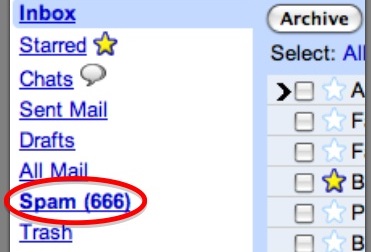
When used right, LinkedIn can help you expand your professional network and stumble upon some interesting job opportunities. Check out this article for a list of mistakes you should avoid if you want to put your best foot forward on LinkedIn.
Having a professional LinkedIn profile is extremely important if you’re looking to build a strong personal brand. This social network helps you showcase your expertise and make a standout impression to recruiters and potential employers. It also allows you to engage with other professionals in the industry and stay up to date with the latest news in your field and professional interests.
Although LinkedIn is especially helpful when it comes to landing higher-paying jobs, using it improperly can do you more harm than good. Here are a few mistakes job seekers commonly make. Avoid them at all costs.

Incomplete profile
LinkedIn offers you many content sections to tell the world more about yourself, your experience, and your accomplishments. Make sure you take full advantage of it. Leaving your profile incomplete can send the wrong message to interested recruiters – that you simply don’t care; or, even worse, that you don’t finish projects. Even if don’t have anything relevant to write down in each and every section, at least fill out the main ones – summary, experience, skills, education, additional info. That way, people who stumble upon your profile can have a well-rounded image about your professional activity.
Additionally, you should personalize your LinkedIn URL. Otherwise it looks sloppy and unprofessional, not to mention the fact that people might have a hard time remembering it. To customize your URL, move your cursor over Profile at the top of your homepage and select Edit Profile. Then, click Edit next to the URL under your profile photo. More on the subject here.

No photo/bad photo
What’s worse than not uploading a photo for your LinkedIn profile? Uploading an inappropriate one. First off, if you leave a networking event with a handful of business cards, it will be more difficult to remember who’s who if they don’t have a picture on their LinkedIn profile. Secondly, the picture is the first thing people notice – if you don’t have one, they’ll likely move along without even browsing through the rest of your page. Make sure it’s one in a professional setting – no pets, no significant other, no alcohol, and no suspicious surroundings.
Remember that this is a network for professionals, so make sure your picture is the kind of image you’d want potential employers to have of you.

You’re too plain
Your profile is quite boring and doesn’t stand out from the crowd, so it’s doubtful that someone will remember it later on. You’re writing online, so you have more space than on a traditional resume – you can freely express your voice and personality. Just think of it this way: a lot of people with the same background and education are competing for the same job, so an interesting summary can help you stand out from the competition.
Additionally, spend some time optimizing your profile to make it easier for people to find you. There are plenty of search engine optimization strategies to try out. Start by identifying the keywords most relevant to your job niche and using them when filling out your profile. Also, optimize your anchor links and your job titles and descriptions. For more information on the subject, take a look here.

No recommendations
Endorsements are one thing, but well-written recommendations are the ones who really set you apart from everyone else. It may feel strange to reach out to past and present colleagues for reviews, but it’s necessary. Ideally, since many times recommendations are terribly generic, yours should come from someone who’s reputable and they should speak to your specific qualifications.
Try this approach: ask the person who wants to recommend you to talk about the specific time you two worked on a project. What did they notice about you? How did you manage to deal with different tasks? Make sure the recommendation they write you is as specific as possible and highlights your best professional traits.

Spamming
Spamming people is never a good idea, especially on LinkedIn. Don’t connect with someone and then immediately send then a message trying to sell them something or convince them to click on a link. Spam includes any kind of unsolicited, promotional messages. You won’t make a very good first impression.

Using it like Facebook
LinkedIn is meant to improve your professional life, not to keep people updated on your personal one. After all, you have Facebook, Instagram, Twitter, and the rest of social media for that. Update your status periodically, but only to share information relevant from your industry or field of work. LinkedIn now also allows users to publish articles – come up with great content and people will notice and remember you. However, don’t over-post, or you may start to annoy your connections; once a day is enough.
As long as you conduct yourself authentically and professionally, LinkedIn will be a great online experience. Make sure you have a complete profile, update it often, and keep in touch with your professional connections. You never know who might present you with a great job opportunity.




